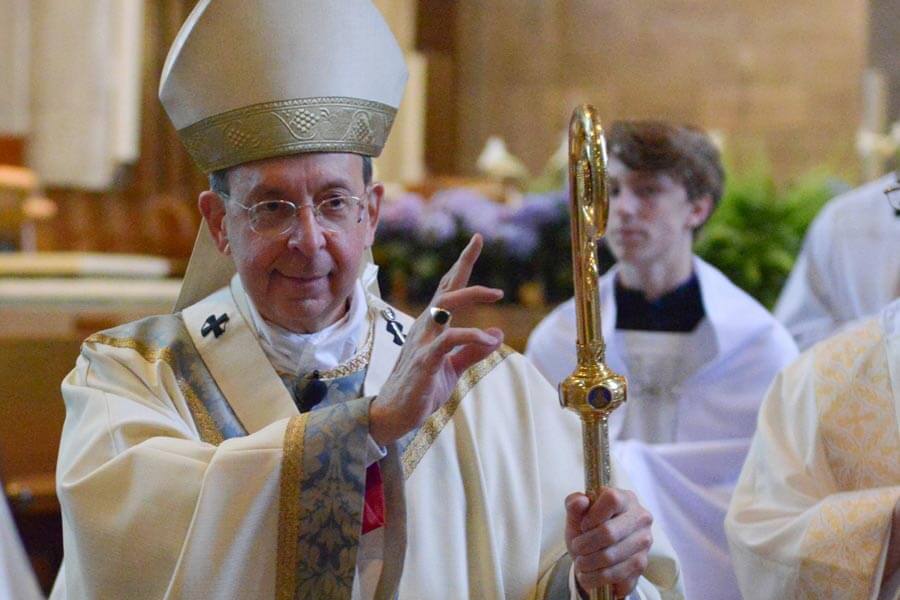Wednesday, 4th Week of Easter
May 11, 2022
Basilica of the Assumption
Acts as the Paradigm of Evangelization
Throughout the Easter Season the Church reads through the Acts of the Apostles. In these readings we see how the Good News of the Resurrection spreads and how the Resurrection of the Lord Jesus changes lives. Those who hear the Gospel and receive it in their hearts come to believe and, through baptism, enter into the household of the faith: the Church.
In our own day, when we can often become discouraged by the challenges we face in spreading the Gospel, these readings help us to rekindle our zeal for evangelization by hearing of the explosive dynamism at the heart of the Church’s life.
Evangelization in the Flesh: Person to Person
In our first reading today, we hear that “the word of God continued to spread and grow” And how does this happen? You may have noticed that in today’s reading we hear a good many names, some we recognize, some we do not. But in this brief passage we have a hint of the method that the Lord chose, the strategy he employed for the spread of the Gospel. What is at the heart of the Church’s early dynamism? How do people hear the Gospel? Someone tells them. The gospel spreads person to person.
This much we know is true: in every age, in every place, God calls fourth women and men through whom he desires to make himself known. The Church is a people who have been changed by their encounter with the Risen Lord Jesus, a people through whom Christ makes himself known. Those who have encountered him desire to share what they have encountered. This is not done merely by presenting ideas but through the convicting power of lived witness. Person witnessing to person. And where does this pattern originate? In the very life and mission of the Lord himself.
In the Gospel today Christ speaks of himself as the light that has come into the darkness. He comes so that those who hear his words might believe and be saved. He comes not to speak his own words, but to say and do what the Father has commanded him to say and do. How does the Father communicate himself? Person to person. Man to man. The Word through whom all things were made takes flesh and dwells among us so that God might make himself known person to person. This is the method, this is the strategy.
Trinitarian Structure of Evangelization: Pointing to Another
But there is one other key factor that we can never forget without which evangelization has never and will never work. Again, God gives us the pattern and it comes from who God is: a Trinity. What does this mean, as the Gospel spreads person to person that interaction can never be limited to an interaction between two individuals. Inevitably such an interaction, however wonderful has a limit. Evangelization needs a Trinitarian structure, an encounter between two that points to a third. Thus, the evangelizer realizes that their goal is not to win someone to their “side” but to help the person they have met to encounter Another, namely the Lord. Not to lead people to ourselves but to open people to their destiny.
What helps us to do this? Once again, the early Church gives us the model. When facing an important decision about their evangelizing mission what do they do? They pray and fast. Prayer draws us out of ourselves and fixes our gaze upon the Lord. Prayer begins from our recognition of our need. Fasting helps we frail and forgetful human beings to remember, in a bodily way, the deeper hunger that exists within our heart. Prayer and fasting lead us out of ourselves.
Conclusion: Different Times, Same Mission
Times may change, but the mission entrusted to the Church remains the same. We who have encountered the Risen Lord Jesus, we who have been changed by his presence, can’t help but want to share the Good News we have received, the promise of abundant life that has been given to us. This happens right where we are. We need not develop a complex plan but rather engage those around us person to person. And in these person to person encounters point to the one in whom we place our hope, the source of our life, the wellspring of our joy: the Risen Lord, Jesus Christ.


